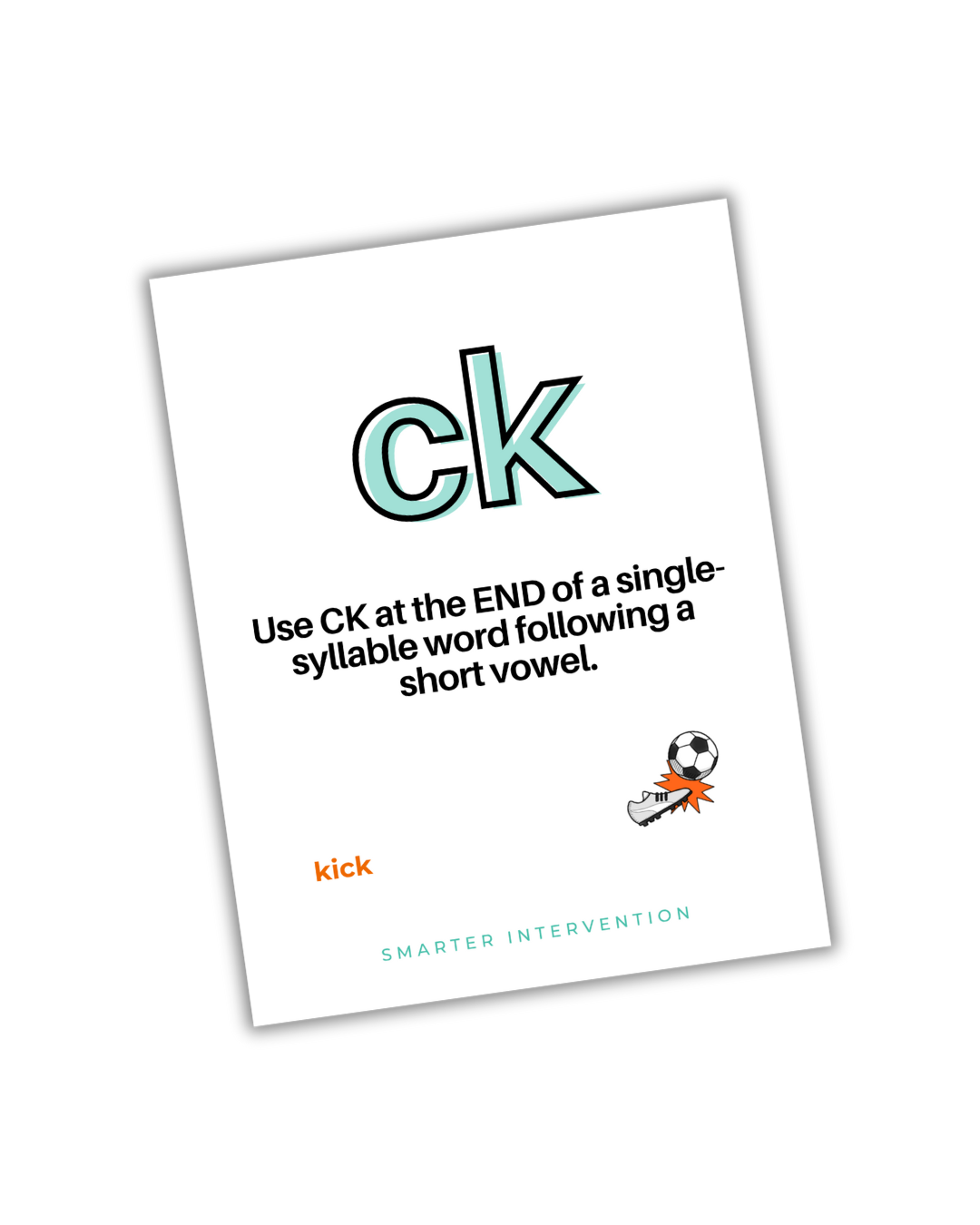A Look into Teaching -ck
When students hear the /k/ sound at the end of a short, closed-syllable word, the spelling can feel arbitrary. Should it be c, k, or ck? Teaching the CK rule removes the guesswork.
By knowing that -ck consistently follows a short vowel in a closed syllable, readers and spellers get reliable clarity.
What Is the CK Rule?
The -ck phonogram:
Always spells the /k/ sound at the end of a single-syllable closed syllable word (like truck or back).
How We Teach the CK Spelling Pattern
We use the scaffolded progression from sound to structured application.
1. Teach the Sound in Isolation
Start with clear, explicit instruction:
“-ck says /k/ at the end of a single-syllable closed-syllable word when it follows a short vowel.”
Students write c-k, say it, and repeat it multisensorily—writing while saying, tracing on textured surfaces, or skywriting for tactile/kinesthetic reinforcement.
2. Connect to Syllable Structure & Spelling Patterns
Explain:
Closed syllables trap a vowel between consonants, leading to a short vowel sound.
When that short vowel is followed by the /k/ sound at the end of a one-syllable word, you almost always use -ck.
Support this visually or through word sorting, making the pattern straightforward and easy to recall.
3. Practice at the Word Level
Start with controlled word lists:
CK examples: back, duck, tick, pack
Contrast with single-consonant endings in open or multi-syllable words (picnic, music) to cement the rule.
Use visuals, like a picture of a kick, to help anchor the ck rule.
4. Practice at the Sentence Level
Move beyond just lists:
Sentence Building: “The duck hid in the truck.”
Dictation: Provide sentences featuring ck words for students to write.
Sentence Combining: Merge phrases like, “The duck is stuck.” + “It hides in the truck.”
This helps shift from isolated decoding to using the pattern in context.
5. Extend to Paragraph Writing
Invite creative writing, maybe a short story where a truck is stuck, with characters like a chick or Jack involved. This moves students from practice to authentic application, revealing whether they’ve truly internalized the rule.
What If Students Get Stuck?
Common missteps:
Dropping ck and ending words with just k (e.g., “bac” instead of “back”)
Misapplying the rule to words that aren’t single-syllable closed words
To scaffold:
Stick with the closed-syllable + short vowel + single-syllable reminder (“truck,” “back,” “pick”)
Use multisensory tracing (write and say “c-k says /k/”)
Provide frequent exposure in both reading and writing contexts
This consistent structure keeps spelling stress low and confidence high.
Looking to teach ck in your lessons?
Depending on where you are in your teaching journey, here are a few next steps:
Just getting started?
Grab our Free Phonics Rules Posters! They’re perfect for hanging in your classroom or using as a quick reference when introducing a new pattern (not only will you get the ck pattern, but tons of other patterns we teach too!).
Download Phonics Rules Posters » Get them here!
Want to see how we teach all the rules?
Check out our Spotlight PD: The Reading Rules We Teach (and Why They Matter!)
This 1-hour on-demand training provides you with everything you need to help you confidently teach the rules that actually move the needle, without getting lost in all the complexity.
You’ll get a clear, research-backed framework that shows which reading rules to focus on, why they matter for the brain, and how to teach them at each level—sound, syllable, word, sentence, paragraph, and passage.




